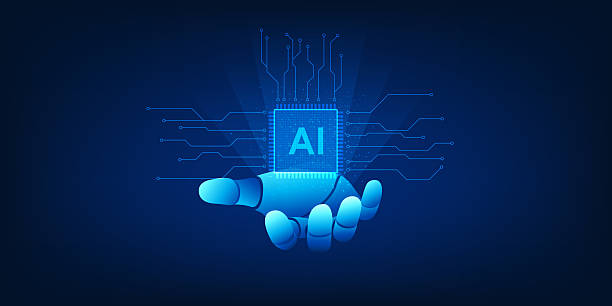What is an AI Robot and What are its Applications?
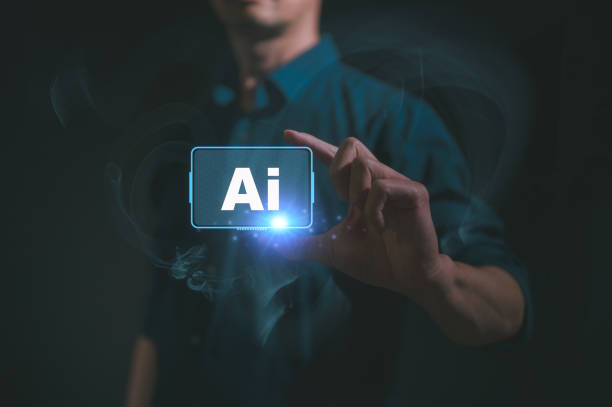
#AI Robot is a combination of two important technology fields: robotics and artificial intelligence.
These robots are not only capable of performing physical tasks, but also utilize artificial intelligence algorithms for learning, decision-making, and solving complex problems.
The applications of AI robots are very extensive and include fields such as manufacturing, healthcare, customer service, education, and even space exploration.
In general, AI robots collect environmental information using sensors and make appropriate decisions by processing this information through artificial intelligence algorithms.
These robots can perform repetitive and dangerous tasks with high accuracy and speed, help humans with everyday tasks, and even act as rescuers and saviors in crisis situations.
The use of AI robots not only increases productivity, but can also improve the quality of human life.
For example, in the manufacturing industry, AI robots can automatically manage production lines and improve product quality.
In the field of health and medicine, these robots can play an important role in precise surgeries, patient rehabilitation, and providing care services to the elderly.
Also, in customer service, AI robots act as virtual assistants to answer customer questions and solve their problems.
Artificial intelligence enables these robots to interact better with their surroundings.
Is your online sales not as expected? With Rasaweb, solve the problem of low sales and poor user experience forever!
✅ Increase the conversion rate of visitors to customers
✅ Create an enjoyable user experience and increase customer trust
⚡ Act now to receive free consultation!
The Difference Between Traditional Robots and AI Robots
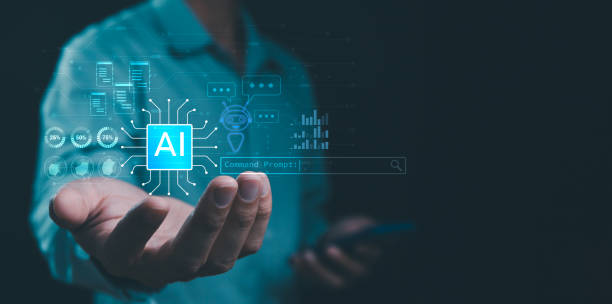
The fundamental difference between traditional robots and AI robots lies in their ability to learn and adapt to different conditions.
Traditional robots are usually programmed to perform specific tasks repetitively and are unable to change their behavior when faced with new situations.
In contrast, AI robots, using machine learning algorithms, can learn from their experiences and adapt their behavior based on new data.
Another important difference is the ability to make independent decisions.
Traditional robots require precise instructions for every decision, while AI robots can make appropriate decisions without human intervention by analyzing data and evaluating conditions.
This capability allows AI robots to operate effectively in complex and unpredictable situations.
Robotics also plays an important role in these differences, as AI robots often utilize more advanced hardware.
For example, a traditional industrial robot may be programmed to repeatedly weld car parts and cannot detect changes in the dimensions of the parts.
But an AI robot can use machine vision to detect the dimensions of the parts and automatically adjust the welding parameters.
This capability dramatically increases the flexibility and efficiency of the AI robot.
Therefore, using AI robots instead of traditional robots can revolutionize many industries.
The Main Components of an AI Robot
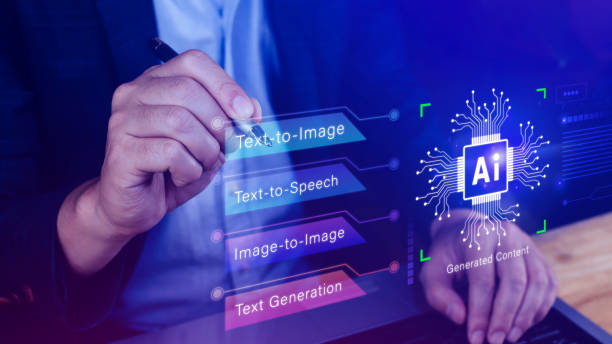
An AI robot consists of several main components, each of which plays an important role in the overall performance of the robot.
These components include sensors, processors, actuators, power supply, and artificial intelligence algorithms.
Sensors collect environmental information and send it to the processors.
Processors analyze this information using artificial intelligence algorithms and make the necessary decisions.
Actuators, by receiving commands from the processors, perform the physical movements and activities of the robot.
The power supply provides the energy needed for the operation of all components.
#Artificial intelligence algorithms play a very important role in the performance of AI robots.
These algorithms include neural networks, machine learning, natural language processing, and machine vision.
Neural networks are used to learn patterns and complex relationships in data.
Machine learning allows the robot to learn from its experiences and improve its performance.
Natural language processing allows the robot to communicate with humans in natural language.
Machine vision allows the robot to analyze images and videos and extract useful information from them.
For example, in a service robot, sensors may include cameras, microphones, and touch sensors.
Processors analyze the information received from these sensors and make decisions such as facial recognition, voice recognition, and obstacle detection.
Actuators may include motors, arms, and wheels, which perform the necessary movements by receiving commands from the processors.
The use of AI robots with these components makes it possible to provide diverse and efficient services.
| Main Components | Description |
|---|---|
| Sensors | Collect environmental information |
| Processors | Analyze information and make decisions |
| Actuators | Perform physical movements |
| Artificial Intelligence Algorithms | Learning, decision-making, and problem-solving |
Machine Learning and its Role in AI Robots

Machine Learning is one of the most important technologies used in AI robots.
Machine learning allows the robot to learn from data and improve its performance without the need for explicit programming.
This process involves training the robot using sample data, evaluating the robot’s performance, and adjusting the robot’s parameters to improve accuracy and efficiency.
There are various machine learning algorithms, each suitable for a specific type of problem.
Some of these algorithms include Supervised Learning, Unsupervised Learning, and Reinforcement Learning.
In supervised learning, the robot is trained using labeled data.
In unsupervised learning, the robot discovers hidden patterns and structures in the data.
In reinforcement learning, the robot learns how to make the best decisions by trial and error.
For example, an autonomous driving robot can use supervised learning to learn how to drive in different conditions from data collected by cameras and sensors.
A face recognition robot can use unsupervised learning to identify and categorize different faces.
A gaming robot can use reinforcement learning to learn how to perform best in a specific game.
The use of AI robots with machine learning capabilities enables the solution of complex problems and the provision of intelligent services.
Did you know that your customers’ first impression of your company is your website? Strengthen your business’s credibility with a powerful corporate website from Rasaweb!
✅ Exclusive and eye-catching design tailored to your brand
✅ Improve user experience and increase customer attraction
⚡ Get a free consultation!
Challenges and Limitations of AI Robots
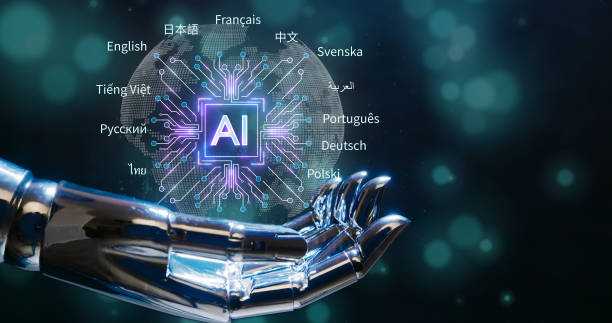
Despite the remarkable progress in the field of AI robots, there are still significant challenges and limitations that need to be addressed.
One of these challenges is the reliability and security of robots.
Robots must be able to operate reliably in different conditions and prevent harm to humans and the environment.
Also, robots must be protected against cyberattacks and unauthorized manipulations.
Another challenge is the high cost of developing and maintaining AI robots.
Designing, building, and programming robots requires a lot of expertise and resources.
Also, robots require periodic maintenance and repair to maintain their optimal performance.
In addition, ethical issues related to the use of AI robots should also be considered.
For example, questions such as the accountability of robots in case of errors and the impact of robots on the labor market should be carefully examined.
For example, if a surgical robot makes an error during surgery, who will be responsible? If robots replace many jobs, what will be the impact on society? These questions show that the development and use of AI robots require careful and comprehensive thinking and planning.
However, recent advances in ethical AI seek to address these challenges.
The use of AI robots should be done with consideration of all these challenges and limitations in order to fully benefit from its advantages.
What Will the Future of AI Robots Look Like?
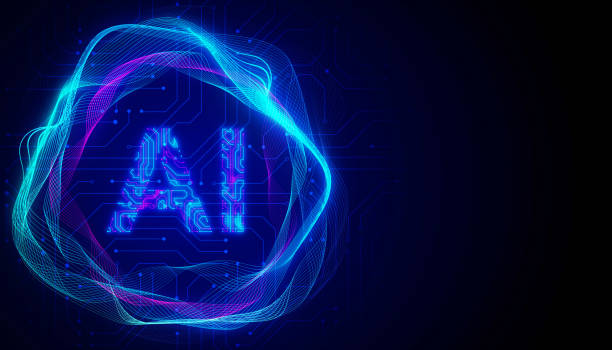
The future of AI robots is very bright and full of new opportunities.
It is predicted that in the near future, robots will be more widely present in our daily lives and will help humans in many fields.
From home robots that perform everyday tasks to industrial robots that manage production lines, robots will play an important role in improving the quality of life and increasing productivity.
One of the important trends in the future of AI robots is the development of autonomous robots.
These robots will be able to perform their tasks without human intervention and adapt to different conditions.
Autonomous robots can play an important role in areas such as transportation, agriculture, and relief services.
Also, recent advances in artificial intelligence and machine learning have made it possible to develop smarter and more efficient robots.
For example, in the near future, we can see robotic doctors who are able to diagnose and treat diseases with high accuracy.
Robotic farmers who automatically manage farms and harvest crops.
Rescue robots that rush to the aid of victims in crisis situations.
The use of AI robots with these capabilities can create great changes in human life.
Therefore, investment in this area and the development of related technologies is of great importance.
Case Study: Application of AI Robots in the Medical Industry
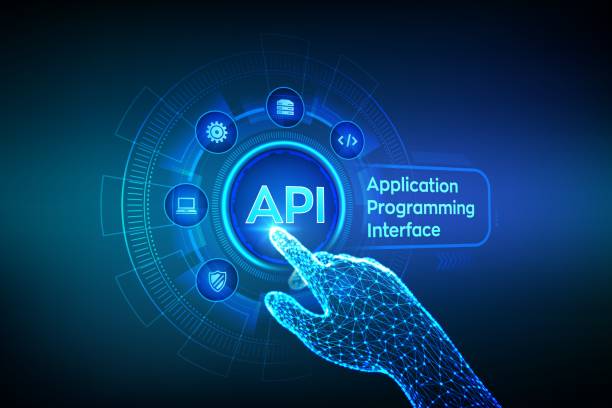
The medical industry is one of the areas where #AI robots play a very important role.
Robots in this field can assist doctors in precise surgeries, patient rehabilitation, providing care services, and even diagnosing diseases.
The use of AI robots in medicine not only increases the accuracy and speed of operations, but can also reduce the risks associated with human error.
One of the important applications of robots in medicine is robotic surgery.
In this type of surgery, the doctor controls the robot using a console and performs the surgery.
Robots are capable of performing very precise and delicate movements that are impossible to perform with human hands.
This allows surgeries to be performed with the least amount of invasion and damage to healthy tissues.
Also, robots can play an important role in patient rehabilitation.
Rehabilitation robots help patients recover faster by providing specific exercises and monitoring their progress.
In addition, AI robots can help doctors diagnose diseases.
By analyzing medical images, laboratory data, and patient medical records, these robots can identify hidden patterns and provide a more accurate diagnosis.
For example, robots can play an important role in the early detection of cancer, cardiovascular diseases, and neurological diseases.
The use of AI robots in medicine can help improve the quality of health services and increase the life expectancy of patients.
| Application | Description |
|---|---|
| Robotic Surgery | Performing precise and minimally invasive surgeries |
| Patient Rehabilitation | Providing exercises and monitoring progress |
| Disease Diagnosis | Analyzing data and providing a more accurate diagnosis |
| Providing Care Services | Helping the elderly and patients in need |
Case Study: Application of AI Robots in the Manufacturing Industry
![]()
The manufacturing industry is another area where AI robots play a very important role.
Robots in this industry can automatically manage production lines, improve product quality, and reduce production costs.
The use of AI robots in manufacturing not only increases productivity, but can also provide safer working conditions for workers.
One of the important applications of robots in the manufacturing industry is the automation of production lines.
Robots are able to perform repetitive and tedious tasks with high accuracy and speed.
This allows workers to focus on more important tasks such as monitoring and controlling product quality.
Also, robots can replace humans in dangerous conditions such as working with chemicals and welding, and prevent accidents.
In addition, AI robots can play an important role in controlling product quality.
Using machine vision and machine learning algorithms, these robots can identify defects and flaws in products and prevent the entry of substandard products into the market.
For example, robots can play an important role in inspecting car parts, checking the quality of food, and detecting electronic defects.
The use of AI robots in the manufacturing industry can help increase competitiveness and improve product quality.
Smart manufacturing also helps in the use of robots in this industry.
Is your online store ready to attract maximum customers and sell more? Rasaweb transforms your online business with modern and efficient online store design.
✅ Increased speed and improved SEO
✅ Excellent user experience on mobile and desktop⚡ Get a free online store design consultation from Rasaweb!
How to Build an AI Robot?

Building an AI robot requires knowledge and expertise in various fields such as robotics, artificial intelligence, electronics, and programming.
To get started, you must first define your purpose for building the robot and determine what tasks your robot is going to perform.
Then you need to choose the required hardware and software components and combine them together.
Hardware components include sensors, processors, actuators, and power supply.
Sensors collect environmental information and send it to the processors.
Processors analyze this information using artificial intelligence algorithms and make the necessary decisions.
Actuators, by receiving commands from the processors, perform the physical movements and activities of the robot.
The power supply provides the energy needed for the operation of all components.
Software components include the operating system, artificial intelligence libraries, and application programs.
For programming the AI robot, you can use various programming languages such as Python, C++, and Java.
Python is one of the most popular programming languages for artificial intelligence and provides you with powerful libraries such as TensorFlow, Keras, and PyTorch.
After selecting the hardware and software components, you need to combine them together and start programming the robot.
Building an AI robot is a complex and time-consuming process, but with effort and perseverance, you can build a smart and efficient robot.
#Smart_Robots will play an important role in the future.
Will AI Robots Replace Humans?
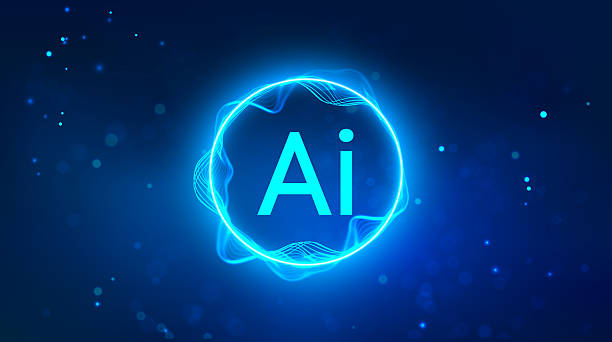
One of the important and controversial questions about AI robots is whether these robots will replace humans in the future? This question has been examined from various aspects and there is no definite answer to it.
Some believe that robots will be able to perform many of the tasks of humans and reduce the need for human labor.
Others believe that robots will only act as a tool to help humans and cannot completely replace them.
The fact is that AI robots are able to perform repetitive, tedious, and dangerous tasks with high accuracy and speed.
This reduces the need for human labor in many industries.
However, robots cannot perform all the tasks of humans.
Tasks that require creativity, critical thinking, empathy, and social skills still require humans.
For example, a robot can weld car parts on a production line, but it cannot create a work of art.
A robot can answer customer questions, but it cannot empathize with them.
Therefore, it seems that in the future, robots and humans will work together and each will play their own role.
The use of AI robots as a tool to help humans can help increase productivity and improve the quality of life.
The future of work requires human-machine collaboration.
Frequently Asked Questions
| Row | Question | Answer |
|---|---|---|
| 1 | What is an AI robot? | An AI robot is a machine capable of understanding, reasoning, learning, and solving problems, and can perform complex tasks with relative autonomy. |
| 2 | What are the most important applications of AI robots? | The main applications include industrial manufacturing, customer service (chatbots), medicine and surgery, self-driving transportation, space exploration, and military affairs. |
| 3 | What is the main difference between an AI robot and a regular robot? | A regular robot only follows programmed instructions, while an AI robot can learn from data, make decisions, and adapt to new environments. |
| 4 | How do AI robots learn? | They learn through machine learning algorithms (such as deep learning, reinforcement learning) and processing vast amounts of data, identifying patterns and improving their performance. |
| 5 | Can AI robots have emotions? | Currently, AI robots do not have real emotions in the human sense. They can mimic or recognize emotions, but they do not have the understanding and experience of them. |
| 6 | What are the current limitations of AI robots? | Limitations include the need for large amounts of data, inability to understand abstract concepts, lack of real creativity, ethical issues, and challenges of generalization in new environments. |
| 7 | What is the role of AI in the development of humanoid robots? | Artificial intelligence helps humanoid robots to walk, maintain their balance, understand their surroundings, interact with humans, and perform complex tasks. |
| 8 | How is the future of AI robots predicted? | It is predicted that AI robots will become smarter, more autonomous, and capable of performing more complex tasks in everyday life and industry, and their interaction with humans will increase. |
| 9 | Can AI robots replace all human jobs? | It is unlikely that all human jobs will be replaced. Robots will take over many repetitive and dangerous tasks, but jobs that require creativity, empathy, and moral judgment will remain. |
| 10 | What ethical and social challenges arise with the expansion of AI robots? | Challenges include issues related to privacy, data security, ethical decision-making by robots, impact on employment, and accountability in case of errors. |
And other services of Rasa Web advertising agency in the field of advertising
Smart Reporting: A dedicated service for growth, increasing website traffic based on the use of real data.
Intelligent Marketing Automation: A dedicated service for growth, increasing website traffic based on Google Ads management.
Smart Brand Identity: An effective tool for analyzing customer behavior with the help of intelligent data analysis.
Smart Sales Automation: A creative platform to improve campaign management with marketing automation.
Intelligent Marketing Automation: Professional optimization for digital branding using attractive user interface design.
And more than hundreds of other services in the field of internet advertising, advertising consulting and organizational solutions
Internet Advertising | Advertising Strategy | Report Ad
Resources
Practical review of artificial intelligence on real estate websites
,Smart robot of Baziyaban; ترین از موفقیت های هوشمند ایرانی ساخته شد
,Artificial intelligence – Wikipedia, the free encyclopedia
,What is artificial intelligence and how does it work? – IranTalent
? With Rasaweb digital marketing agency Afarin, your business shines in the digital world. We strengthen your digital identity by providing comprehensive services including corporate website design.
📍 Tehran, Mirdamad Street, next to the Central Bank, South Kazerun Alley, Ramin Alley No. 6



